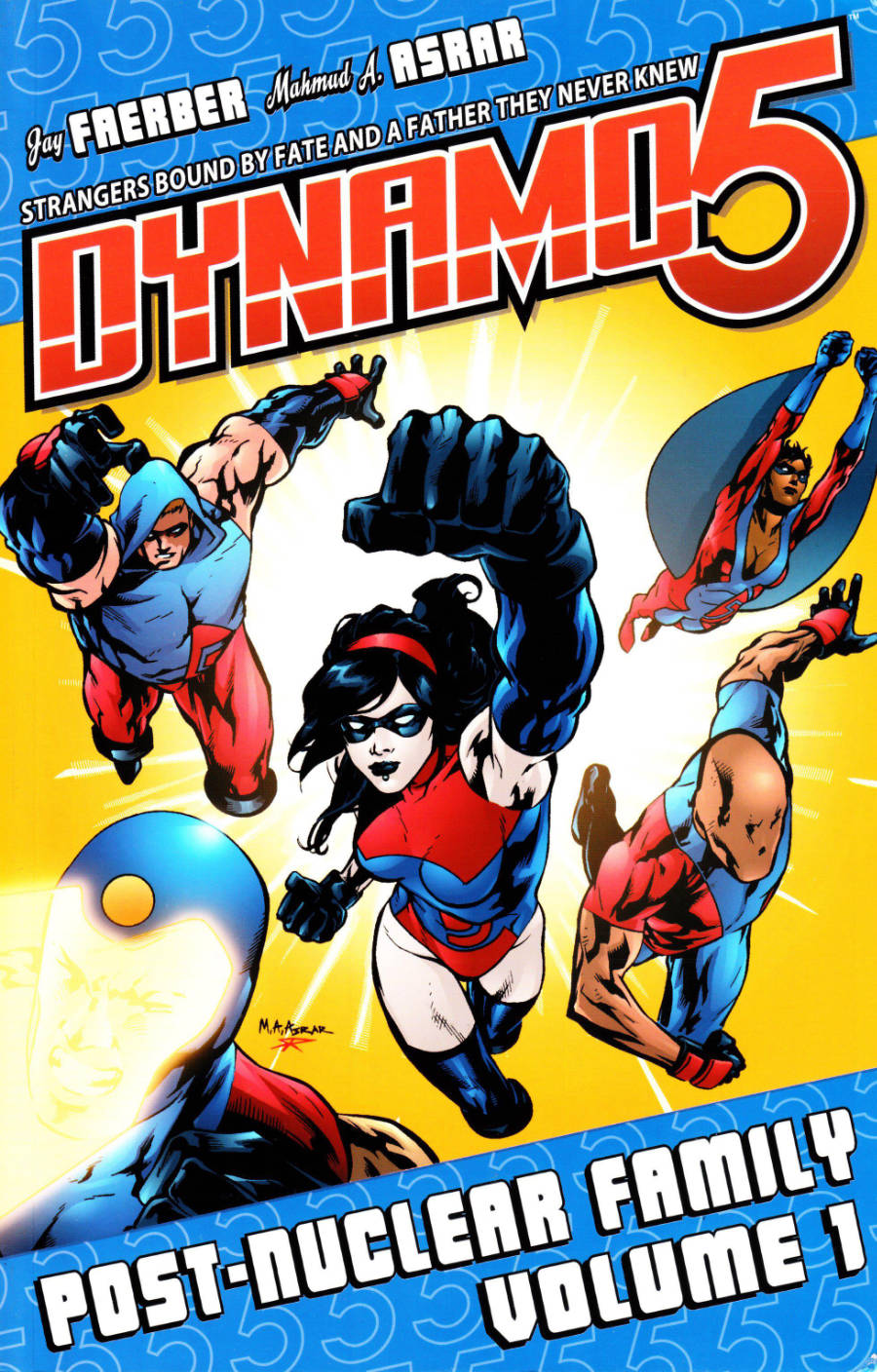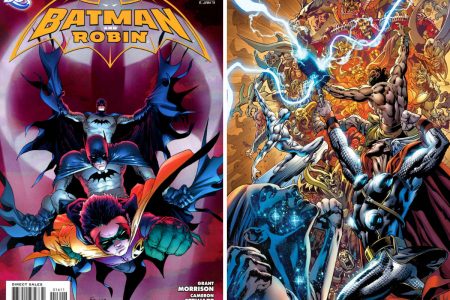Dynamo 5 #1–7 by Jay Faerber and Mahmud A Asrar
I’m not sure why I bought this trade paperback – I hadn’t read anything by Faerber before, let alone own any of his work. I think there were several factors behind the decision: Greg Burgas was a big advocate of Dynamo 5 and Faerber’s other creator-owned work, Noble Causes; I’m keen to try new things and support creator-owned series; and it helped that it was cheap, something that Faerber did to help people try the series.
The concept for the book is intriguing: Captain Dynamo, superhero and protector of Tower City, has died. His widow, Maddie Warner, discovers among his things a little black book of the many women with whom he was unfaithful; deciding that the city needs protection, she seeks out the women who had children, children who may have inherited powers from their father. She gathers them and exposes them to the same radiation that gave Captain Dynamo his powers, thus unlocking their powers. Together, these half-siblings are the newest heroes on the block, Dynamo 5, unaware that Maddie Warner is more than just a Lois Lane-alike – she’s an agent of F.L.A.G., as revealed in the last pages in the first series. That’s a good opening for a comic book.
The team is an interesting mix of types: Hector Chang, a geeky kid who gets the powers of laser vision; Bridget Flynn is a gothy NYU film graduate who works in a cinema, develops super-strength; Olivia ‘Livvie’ Lewis, a driven black girl at Georgetown University, daughter of a high-priced DC lawyer, who gains the power of flight; Spencer Bridges, a sexually promiscuous black man who grew up in foster homes, who gets shape-shifting; and Gage Reinhart, a big white jock from Texas, who would rather be tackling in school American football games, but gets telepathy. There is a lot of potential for interaction and character development, and Faerber does a good job with them – they feel natural and the dialogue has a very light touch to it, with humour and warmth. Faerber has a very strong grasp on the world he has created and the characters that populate it, and he’s set up an engrossing dynamic (if you’ll pardon the pun).
Asrar is not an artist I’ve come across before, but it’s clear he’s got the skills for mainstream superhero comic books. He draws exciting action and his storytelling abilities are good, with very good panel transition choices. He tends to draw a little on the sexy side, and he draws Hector too athletically in spandex even though he’s supposed to be the geeky one; his faces are good at expression but can sometimes be inconsistently drawn. He’s definitely one of the draws on the book in addition to the story itself.
When I first read this, I thought that it was good but there wasn’t enough to continue to reading more. However, in reading this again for the purposes of collecting my thoughts, I found that I was wrong in my assessment – there is a plenty here and I want to read more. This collection is a solid superhero comic book, and Faerber and Asrar have done a cracking job.




